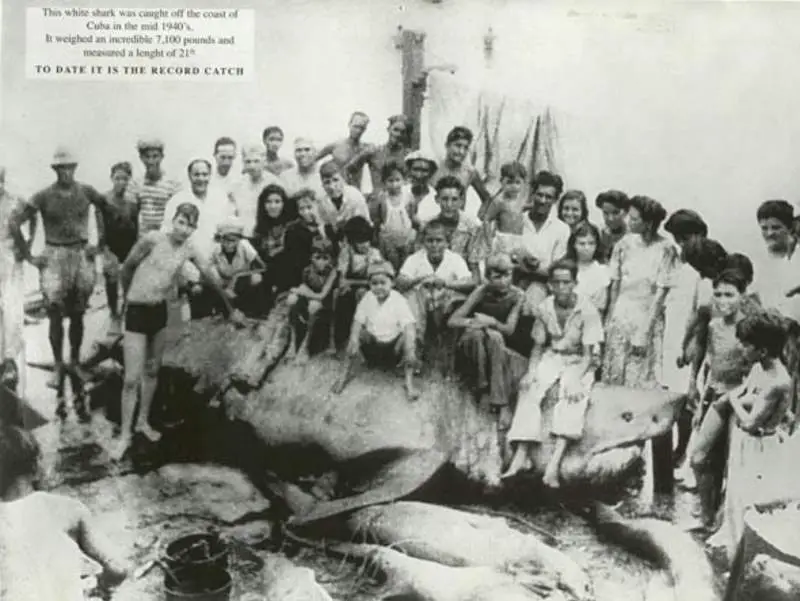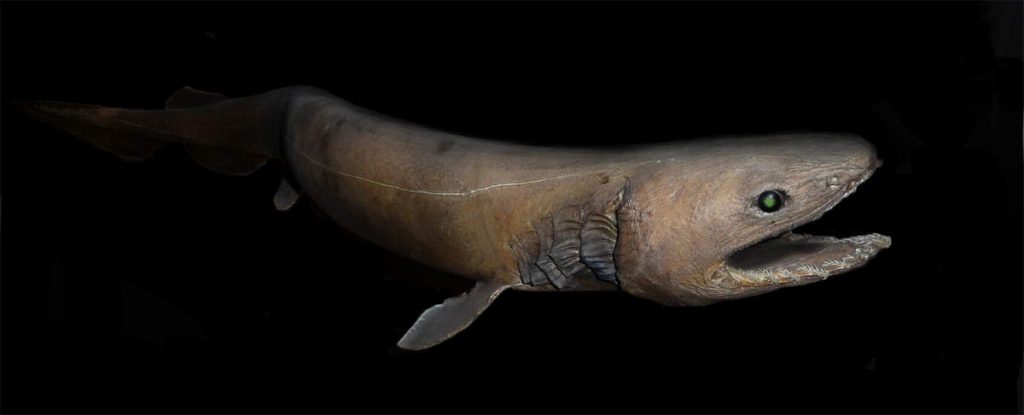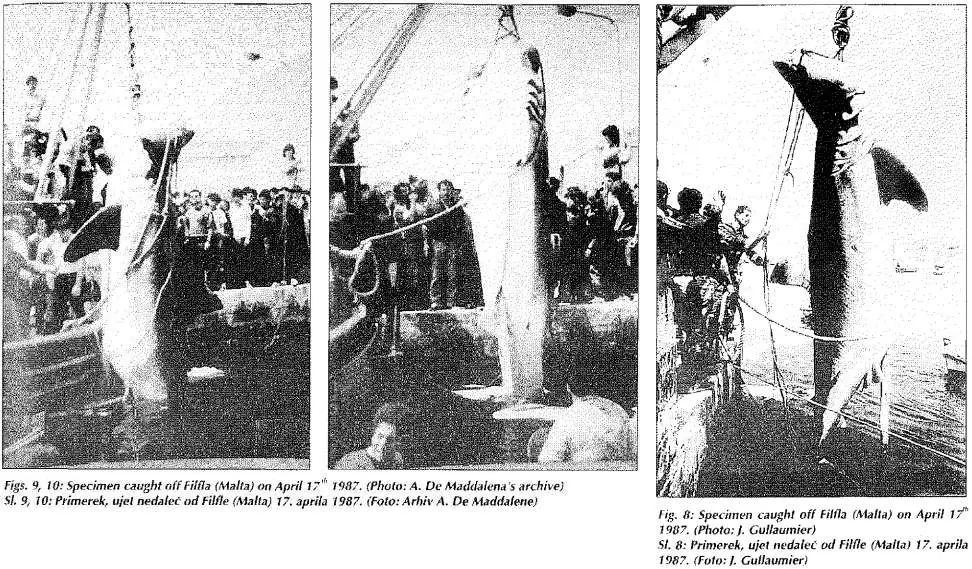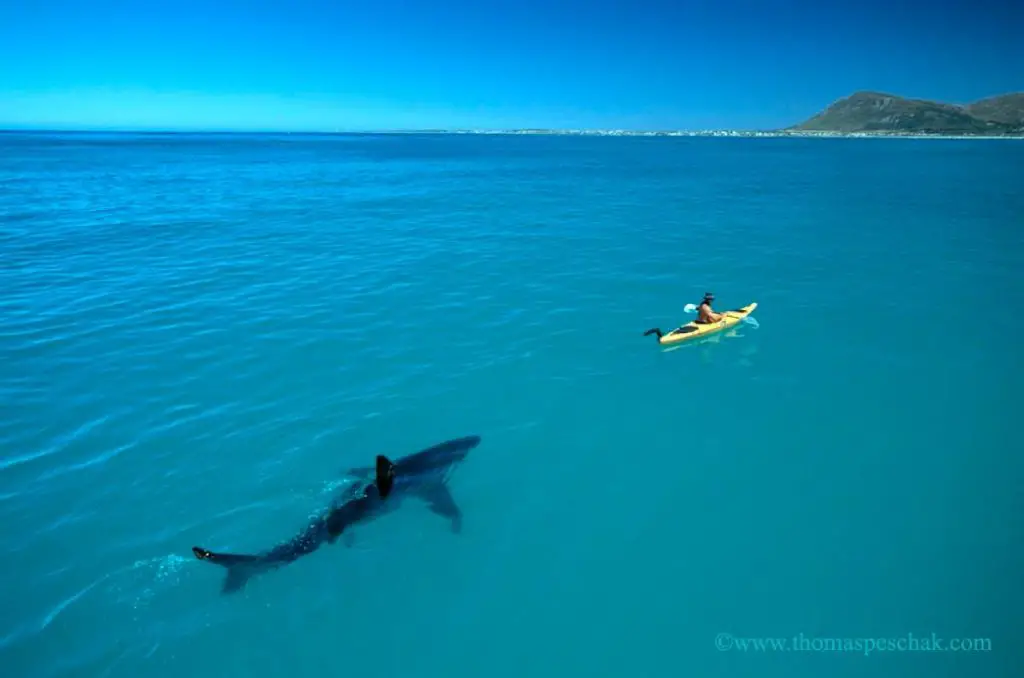What Is the Largest Number Ever Named
What are the biggest great white sharks ever recorded? The great white shark (scientific name: Carcharodon carcharias) is not the biggest shark (that title goes to the whale shark), but they are the largest predatory fish on Earth. According to the Guinness World Records Book, full-grown adults are average 4.3-4.6 meters (14-15 feet) in length, and generally, weigh 520-770 kg (1,150-1,700 lb). But there are many (unconfirmed) claims of huge specimens up to 10 meters (33 feet) in length. Newspapers and home photo albums are full of unconfirmed huge great white tales. And although few have been properly authenticated, there is a lot of circumstantial evidence to suggest that the largest great white sharks grow to more than 6 meters (20 feet) in length.

It is really difficult to measure how large a shark – or any other fish actually is. The reason is simple: they live in water, and it is not entirely safe to get close to them. Safety is one thing, the other thing is their incredible speed: great white sharks can accelerate to over 56 km/h (35 mph).
Another difficulty is, their bodies are comprised of mostly water too, so when they are landed the water dries up, and they become smaller.
Overall, the great white is the fifth largest living fish on earth.

Historically, a number of very large great white shark specimens have been recorded. For decades, many sources including the Guinness Book of World Records listed two great white sharks as the largest individuals: In the 1870s, a 10.9 m (36 ft) great white captured in southern Australian waters, near Port Fairy, and an 11.3 meters (37 ft) shark trapped in a herring weir in New Brunswick, Canada, in the 1930s.
Some researchers question these measurements' reliability, noting they were much larger than any other accurately reported sighting. This New Brunswick shark may have been a misidentified basking shark, as the two have similar body shapes. The basking shark (Cetorhinus maximus) is the second-largest living fish, after the whale shark, and one of three plankton-eating sharks besides the whale shark and megamouth shark.
The question of the Port Fairy shark was settled in the 1970s when J. E. Randall examined the shark's jaws and "found that the Port Fairy shark was of the order of 5 m (17 ft) in length and suggested that a mistake had been made in the original record, in 1870, of the shark's length".
So, what is the largest great white shark ever recorded?
There is no clear winner, but there are a few candidates (and a lot of disputes, too):
The Cuba Shark (1945)

A very large specimen was caught off of the coast of Cuba in 1945. Known as the "Cojimar Specimen", it allegedly weighed 7,000 pounds (3,175 kg) and was 21 feet (6.4 m) in length. It is often cited as the largest great white shark ever recorded. At the time, an entire village seemed to come out for the photo. Several adults stood at the background, while kids sat on the long-dead shark, legs dangling over the side.
But, later analysis of the photo by experts, such as R. Aidan Martin of the ReefQuest Center for Shark Research, suggests the shark fell short of its stated size. Martin instead concluded it measured around 16 feet (4.9 meters) in length, with a weight that's hard to determine just based on a single photo.

Ledge Point Shark (1987)
According to the American ichthyologist and a leading authority on coral reef fishes, also a shark expert J. E. Randall, the largest reliably measured great white shark was 6.0 meters (19.7 feet), found near Ledge Point, Western Australia in 1987.
Malta Shark (1987)

On April 17, 1987, Alfredo Cutajar caught a big female great white off the coast of Filfla, Malta that was reportedly measured to be 7.23 meters (23.7 feet) long and weighed 2,880 kg (6,349 lbs).
In the mid-90s, Cutajar and John Abela were interviewed for a documentary "Jaws in the Mediterranean". This time, Cutajar has claimed that the shark was 7.01 meters (23 feet) and Abela confirmed that. He said that he had accurately measured the shark twice, as it lay on the floor, at 23 feet 5 inches (7.14 meters). In 2001, again, Cutajar said that it was 7.01 meters (23 feet) in length.
Later, based a set of its jaws, Spanish shark researchers Joan Barrull and Isabel Mate estimated that the Malta shark was between 6,68-6.81 meters (21.92-22.34 feet) in length.
There's been some dispute about the accuracy of these numbers, however, and experts have been arguing over it for years. Shark experts Richard Ellis and John E. McCosker, authors of the book The Great White Shark (1991), have also largely discounted the claim of the Maltese fisherman.

The Taiwan Shark (1997)

On May 14, 1997, a huge great white shark was caught in a set-net off Hualien County, Taiwan. The gross weight of this animal was 2500 kilograms (5,500 pounds) and the total length is claimed at 6.7 to 7.0 meters (~22 feet). This length, however, is unconfirmed, and note that forced perspective is used in its only photo. Still, it is considered as possibly the largest great white shark ever recorded.
Kangaroo Island great white shark (1987)
On April 1, 1987, a huge great white was captured near Kangaroo Island in Australia. It was estimated at at least 6.9 meters (23 feet) long.
According to Wikipedia, the shark size estimation methods proposed by J. E. Randall to suggest that the Kangaroo Island specimen was 5.8-6.4 meters (19-21 feet) long. In a similar fashion, I. K. Fergusson also used shark size estimation methods proposed by J. E. Randall to suggest that the MALTA specimen was 5.3-5.7 meters (17-19 feet) long.
However, photographic evidence suggested that these specimens were larger than the size estimations yielded through Randall's methods. Thus, a team of scientists-H. F. Mollet, G. M. Cailliet, A. P. Klimley, D. A. Ebert, A. D. Testi, and L. J. V. Compagno-reviewed the cases of the KANGA and MALTA specimens in 1996 to resolve the dispute by conducting a comprehensive morphometric analysis of the remains of these sharks and re-examination of photographic evidence in an attempt to validate the original size estimations and their findings were consistent with them. The findings indicated that estimations by P. Resiley and J. Abela are reasonable and could not be ruled out.
The great white shark caught by Vic Hislop in 1985

In the photograph above, we see a huge 21′ 8″ (6.6 meter) great white shark caught by the Australian shark hunter Vic Hislop in 1985 (still forced perspective is used). This may be the biggest white shark ever caught. Hislop also believes there are many even bigger sharks out there in our oceans. He also claims to have caught a bigger one than the one pictured, but couldn't land it.
Contrary to the current belief that the great whites are not natural man-eaters, Hislop believes that the great white sharks can develop a taste for humans
Hislop claims many of the missings did not drown but were devoured by the great whites and other sharks.
Hislop says "Once a shark has tasted humans he will attack over and over again. A shark has a very small brain but he never forgets".
He also blames killer sharks coming inshore on commercial fishing. "We've thinned out fish all over the world using nets. When fishermen take in 5000 tuna they are seriously depleting the ocean of shark food."
Please note that Vic Hislop's claims are not accepted by the field scientists.
1988 Canada Shark

According to the Canadian Shark Research Center, the world's largest accurately measured great white was 20 feet (6.1 meters) in length. This was a female caught in 1988 at Canada's Prince Edward Island. It is caught by the local fisherman David McKendrick.
The shark became tangled in McKendrick's net as he fished off the western side of the island, and died before it was brought to the surface. A large female, the shark was a rarity in the northern seas.
Deep Blue, the largest great white shark ever caught on camera
This enormous great white shark named "Deep Blue" was spotted near Isla Guadalupe, off the coast of Mexico and is probably the largest great white shark ever to be filmed and believed to be one of the largest great white sharks ever seen. The massive predator was first featured in August by the Discovery Channel in a documentary when researchers tagged the gigantic fish. Researchers believed Deep Blue was pregnant. The shark thought to be around 50 years old and estimated at 20 feet (6.1 meters).
Great whites can live to around 70 years old in the wild. But today, sharks aren't living nearly as long as they used to – and in turn, not growing as large as they once did.
In the video below, a fearless diver high-fiving Deep Blue.
The Marino Bay (Australia) Shark (2016)

An Australian crew has photographed what may be the largest great white shark ever seen, at an approximate length of 23 feet (7 meters). The shark was spotted just 300 feet off the shore of Marino Bay, South Australia. The photo was published on Shark Alerts South Australia Facebook page. According to the non-profit organization, "the crew (of the shark patrol helicopter) used their Jet Boat to compare the size which is around 6 meters (20 feet) and the shark was bigger".
But naturally many people are skeptical about the claim. Colin Simpfendorfer, a marine sciences professor at James Cook University, said that: "The size issue from photos like this is always challenging. You can get a sense of its size, but measuring it to that sort of accuracy is always a challenge, particularly when there's very little in the way of size reference in the picture."
In a comment on their Facebook page, Shark Alerts South Australia says: "These guys are professionals so I can ensure you no lies on the length here… As stated the "biggest they've ever seen" .
Great White Sharks' relationship with humans
The great white sharks are also known as the great white, white pointer, white shark, or white death. Despite they are responsible for by far the largest number of recorded shark attacks on humans, many scientists believe that they do not prey on humans.

In the Mediterranean Sea, there have been 31 confirmed attacks against humans in the last two centuries, most of which were non-fatal. Scientists say many of the attacks are "test bites", and the fatalities are usually caused by blood loss from the initial bite rather than from critical organ loss or from whole consumption.
Humans are not appropriate prey because the shark's digestion is too slow to cope with a human's high ratio of bone to muscle and fat. Accordingly, in most recorded attacks, great whites broke off contact after the first bite. However, some researchers have hypothesized that the reason the proportion of fatalities is low is not
In the 1980s, John McCosker, Chair of Aquatic Biology at the California Academy of Sciences, noted that divers who dove solo and were attacked by great whites were generally at least partially consumed, while divers who followed the buddy system were generally rescued by their buddy.
McCosker and Timothy C. Tricas, an author and professor at the University of Hawaii, suggest that a standard pattern for great whites is to make an initial devastating attack and then wait for the prey to weaken before consuming the wounded animal. Humans' ability to move out of reach with the help of others, thus foiling the attack, is unusual for a great white's prey.
Sources
- Great white shark on Wikipedia
- Largest Great White Shark on Discovery.com
- Largest Predatory Fish on Guinness World Records Book
- What Are the Biggest Great White Sharks Ever Recorded? on SharkFacts
- "This Might Be The Largest Great White Shark Ever Caught On Camera" on The Dodo
- "What Are the Biggest Great White Sharks Ever Recorded?" on owlcation.com
- Mediterranean Great White Sharks – A Comprehensive Study Including All Recorded Sightings. By Alessandro De Maddalena and Walter Heim.
- Study: "An analysis of the photographic
evidences of the largest great white sharks, Carcharodon carcharias (Linnaeus, 1754), captured in the Mediterranean Sea with considerations about the maximum size of the species". Alessandro de Maddalena, Marco Zuffa, Lovrenc Lipej, Antonio Celona. October 10, 2001. (Pdf)
- Author
- Recent Posts
![]()
I am a software developer, a former road racing cyclist, and a science enthusiast. Also an animal lover! I write about the planet Earth and science on this website, ourplnt.com. I also take care of stray cats & dogs. Please consider supporting me on Patreon.
![]()
What Is the Largest Number Ever Named
Source: https://ourplnt.com/largest-great-white-sharks-ever-recorded/
0 Response to "What Is the Largest Number Ever Named"
Post a Comment